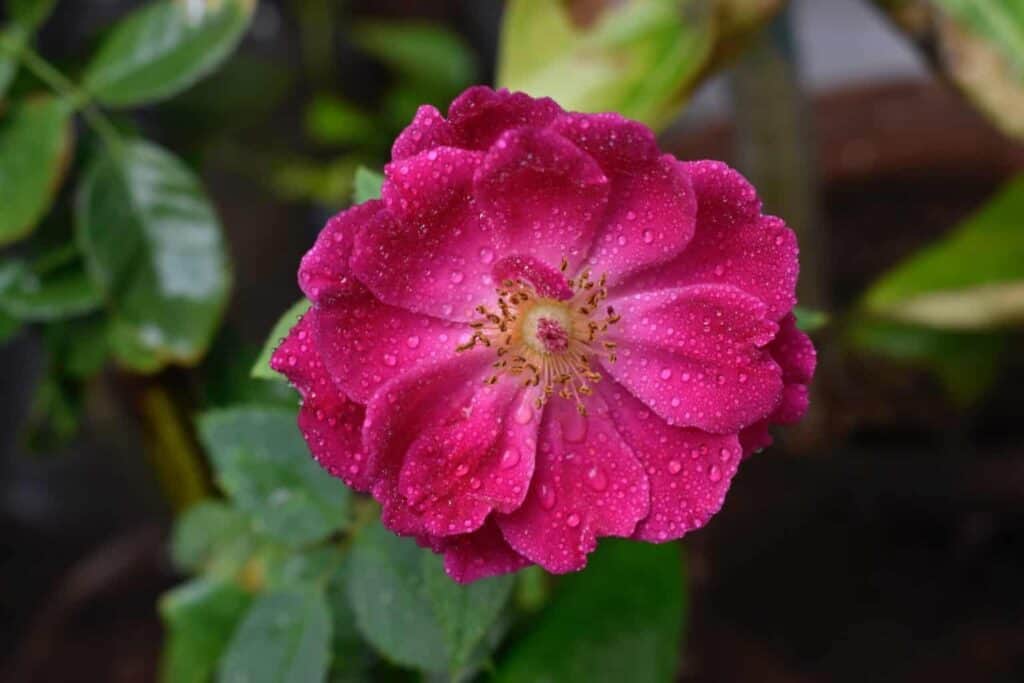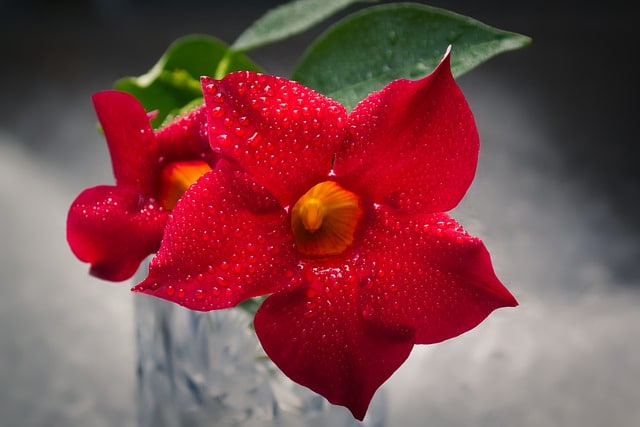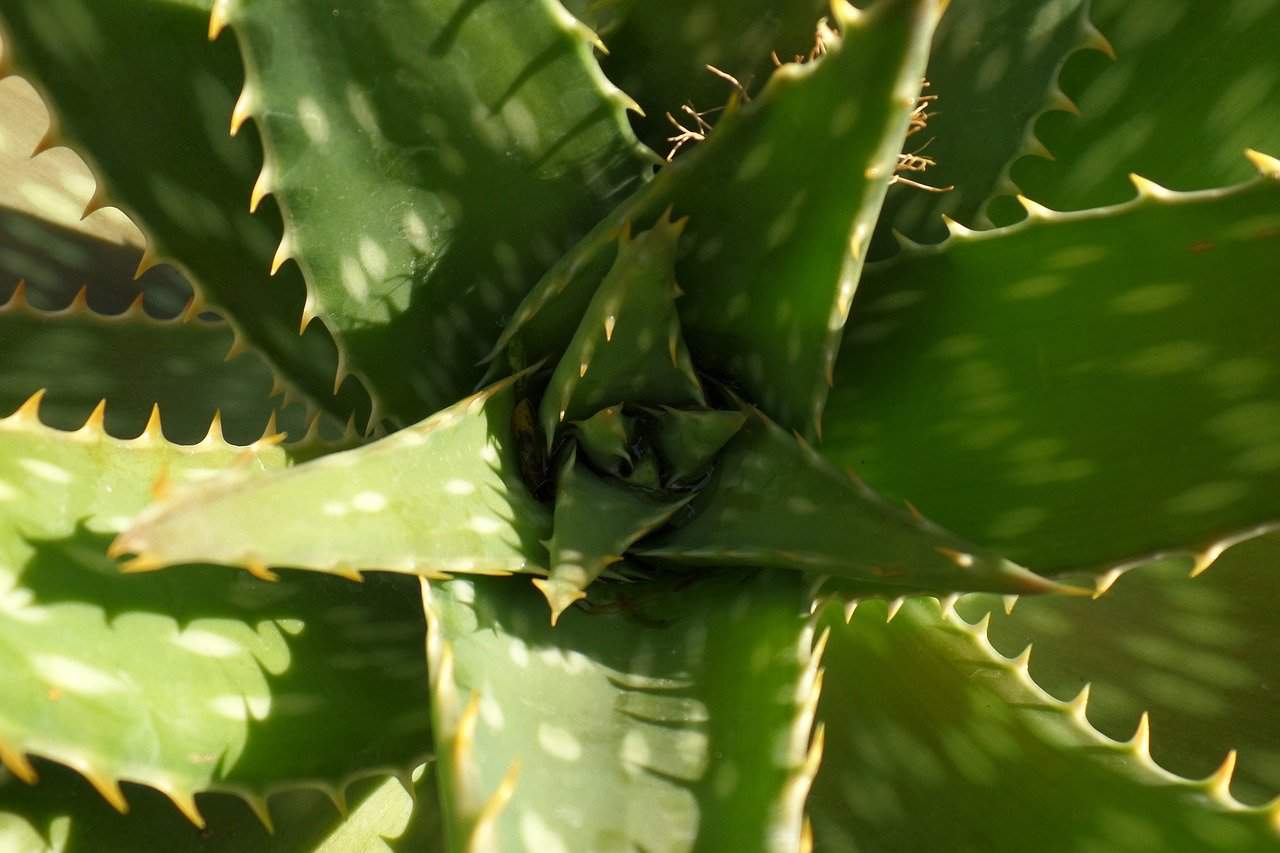Photo by MITESH SAVANI on Unsplash
|| Geranium Flower ||
Table of Content
Palmarosa Plant
The Palmarosa plant, also known as Indian Geranium, is a flowering plant in the cardamom family. Native to India. It is a tall, slender plant with dark green leaves and clusters of small, pinkish-white flowers; it has a sweet, slightly dry floral scent with a distinct hint of rose. It can grow to be two meters tall. It has long, thin leaves covered in hair. The shrub produces tiny white flowers with a pleasant fragrance.
Rosha or ginger grassroots Palmarosa has a slightly dry floral scent with a distinct hint of rose. The Latin name, Cymbopogon martini, is from the same family as lemongrass (Cymbopogon citratus) and is very similar in composition but with a fragrance more akin to geranium. Today’s primary use is still within the cosmetic and perfume industries as the scent is a good substitute for rose. Palmarosa essential oil is extracted from the plant’s leaves and stems.
Palmarosa oil is also used as an insecticide, and farmers often grow it as a companion plant to repel pests from other crops. Geraniol, also highly evident in geranium, rose, and citronella, is responsible for the fragrance and insecticidal properties. The insecticidal property extends to plants with a natural pest control agency.
Palmarosa oil is distilled from a wild grass harvested before it flowers to maximize quality. The highest yield is obtained when the grass is thoroughly dried, about one week after cutting, and this is when the primary constituent, geraniol, is highest
Now, as ever, the majority of Palmarosa cultivation happens in the wetlands of India, although having sensed commercial viability, Vietnam, Australia, and Guatemala are joining the market.
Along with many other treasures from India, Palmarosa has made its way to Europe along the old Trade Roads. With its sweet, rose-like scent, its primary use was in the perfume industry and incense making. Good use was made of this in Turkey and Bulgaria, where it was used as an adulterant of the hugely costly Otto of Roses (and hence also known as Turkish Geranium Oil). It spread across the continent, where it was valued for its fragrant addition to soaps and cosmetics.
Planting And Caring for Palmarosa Plants
When it comes to planting Palmarosa plants, it is best to do so in the springtime. Gardeners should look for a spot in their garden that gets full sun and has well-drained soil. Once they have found the perfect place, they can dig a hole twice as wide as the plant’s roots. After planting the Palmarosa plant, gardeners should water it deeply and then apply a layer of mulch around the base of the plant. When it comes to caring,
Palmarosa plants are relatively low-maintenance. They should be watered regularly, especially during extended heat or drought periods. Gardeners should also fertilize their Palmarosa plants every few weeks during the growing season. With proper care, Palmarosa plants will thrive and provide color and interest to any garden, and they thrive in warm, humid climates. If you live in an area of Mediterranean climate, you can quickly grow a Palmarosa garden.
Palmarosa plants prefer full sun and well-drained soil. When planting, space the plants at least two feet apart to allow adequate air circulation. These plants are drought tolerant and need little water once established.
However, during the first few months after planting, you will need to water regularly to help the roots establish themselves. When caring for Palmarosa plants, it is important to prune them to encourage new growth regularly. The optimum time to prune is late in the season. spring or early summer. Palmarosa plants can provide your garden with years of beauty and enjoyment with proper care.
Is The Palmarosa Plant A Perennial Or An Annual Plant?
The Palmarosa plant is a garden staple in many parts of the world. Its sweet-smelling leaves add a pleasant fragrance to the air, and its flowering stems add a splash of color. But what type of plant is Palmarosa perennial or an annual?
The answer depends on where you live. Palmarosa evergreen perennial can grow up to four feet tall in warm climates. However, it is generally grown as an annual plant in cooler temperatures. Gardeners in colder regions typically start Palmarosa each year and then replant it after the danger of frost has passed.
So whether you consider Palmarosa perennial or an annual plant depends on your location. But one thing is for sure: this versatile plant will add beauty and fragrance to your garden no matter where you live.
Best Way To Propagate A Palmarosa Plant
Palmarosa plant is by seed. The seed should be placed in a well-draining potting mix and kept moist until germination occurs. After the seedlings have emerged, they can be transplanted. transplanted into individual pots.
Root cuttings can also propagate Palmarosa plants. The roots should be cut into 2-inch pieces and placed in a well-draining potting mix. They should be kept moist until new growth appears. Palmarosa plants are relatively easy to propagate and make an excellent addition to any garden.
Is Palmarosa Edible?
Palmarosa is a popular cooking ingredient in many parts of the world, especially in Asia. The plant is closely related to lemongrass, and its leaves have a similar citrusy flavor. Palmarosa can be used in various dishes, including soups, curries, and stir-fries. It is also commonly used as a flavoring for tea.
When it comes to cooking, Palmarosa is a versatile ingredient that can be used in various dishes. The oil from the plant is often used to flavor stir-fries, curries, and soups. Palmarosa can also be used to make spice blends and marinades.
In addition, the plant’s leaves can be used as wrappers for steamed dishes. When cooking with Palmarosa, it is essential to use fresh leaves or oil. Dried leaves will not provide the same flavor profile. When cooking with Palmarosa oil, use it sparingly as it can be pretty potent. A little goes a long way when cooking with this fragrant oil.




